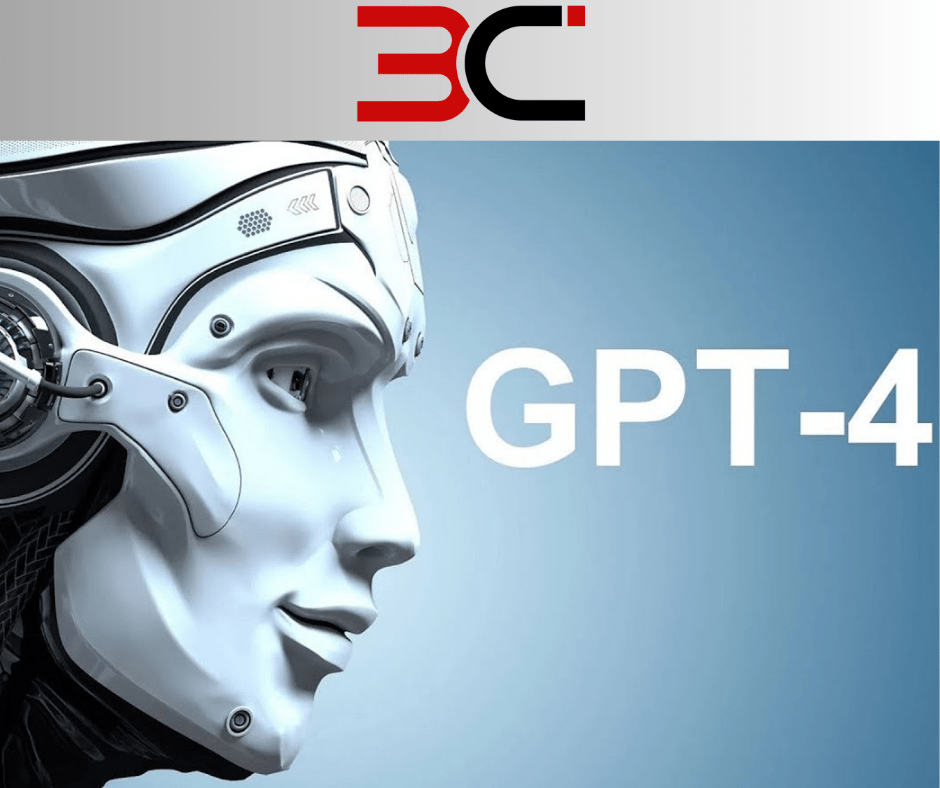Are you curious about ChatGPT4 and how it works? Then, you have come to the right place!
ChatGPT4 is a language model developed by OpenAI that has been making waves in the field of natural language processing. With its advanced capabilities, ChatGPT4 is capable of generating human-like responses to natural language input and has a wide range of applications, including chatbots and language translation.
In this ultimate guide, we will dive deep into the fundamentals of ChatGPT4, from its history to its benefits and limitations. Whether you are a developer or simply curious about this cutting-edge technology, this guide will help you understand the basics of ChatGPT4 and how it can be used to enhance human-machine interaction.
What is ChatGPT4?
ChatGPT4 is a powerful language model developed by OpenAI, which is based on the GPT-3.5 architecture. It has the ability to understand and generate human-like responses to natural language input, making it a valuable tool for a range of applications, including chatbots, language translation, and more.
The History of ChatGPT
The history of ChatGPT can be traced back to the original GPT model, which was released in June 2018. This was followed by the release of GPT-2, which gained notoriety for its impressive language generation capabilities.
In June 2020, OpenAI released GPT-3, which boasted even greater language generation capabilities and was the largest language model to date. Building on the success of GPT-3, OpenAI released GPT-3.5, which was designed to improve upon the previous model’s performance and scalability.
Finally, in September 2022, OpenAI released ChatGPT4, which is the latest and most advanced version of the GPT model, specifically designed for human-machine communication.
The Technologies Used to Develop ChatGPT
By leveraging some advanced technologies, OpenAI was able to create ChatGPT that is more accurate, more scalable, and more versatile than ever before. The development of this language model used a range of cutting-edge technologies, including:
- Transformers: These are a type of neural network architecture that is particularly well-suited to natural language processing. They allow ChatGPT4 to analyze and understand the context of natural language input, which helps to generate more accurate and appropriate responses.
- Generative Pre-training: This is like training the language model on large amounts of data before fine-tuning it for a specific task. This process allows ChatGPT4 to understand the nuances of human language and generate more natural-sounding responses.
- Multi-Task Learning: It involves training the model on multiple tasks simultaneously, which can help to improve its performance and scalability. ChatGPT4 has been trained on various tasks, including language modeling, machine translation, and question answering.
- Transfer Learning: The process involves using a pre-trained model as a starting point for a new task. ChatGPT4 was built on top of the GPT-3.5 model, which allowed it to inherit some of its impressive language generation capabilities.
Different Versions of ChatGPT
There have been several versions of the GPT model released by OpenAI. Each version of the GPT model has built upon the successes of the previous version, resulting in increasingly impressive language generation capabilities.
Without further ado, let’s take a look at the versions of ChatGPT so far:
- GPT-1: Released in June 2018, GPT-1 was the first version of the model. It contained 117 million parameters and was primarily used for language modeling tasks.
- GPT-2: Released in February 2019, GPT-2 was a significant improvement over GPT-1, with 1.5 billion parameters. It gained notoriety for its impressive language generation capabilities, which raised concerns about the potential misuse of such technology.
- GPT-3: Released in June 2020, GPT-3 was the largest language model to date, with 175 billion parameters. It was capable of generating highly natural-sounding text and was used for a wide range of tasks, including chatbots, translation, and more.
- GPT-3.5: Released in January 2022, GPT-3.5 was designed to improve the performance and scalability of GPT-3. It contained 350 billion parameters and was capable of generating even more impressive language output.
- ChatGPT4: Released in September 2022, ChatGPT4 is the latest and most advanced version of the GPT model, specifically designed for human-machine communication. It contains 550 billion parameters and is optimized for generating natural-sounding text in a conversational context.
How to Use ChatGPT4 – Step-By-Step Guide
Many have been using ChatGPT for various purposes. Whether it is for coding or simply making a cooking recipe, ChatGPT has been helping numerous users since its inception. Using ChatGPT4 is relatively straightforward, and can be done in just a few steps:
- Choose a platform: ChatGPT4 is available on various platforms, including OpenAI’s API, GPT-3 Playground, and third-party integrations. Choose a platform that suits your needs and sign up for an account.
- Choose a mode: ChatGPT4 has several different modes, including “completions” and “davinci”. Choose a mode that is appropriate for your use case.
- Enter text: Enter the text that you would like ChatGPT4 to generate a response to. Ensure the text is in natural language, and avoid using overly complex language or jargon.
- Generate a response: Once you have entered your input, ChatGPT4 will generate a response in natural language. Review the response and edit it if necessary.
- Repeat as necessary: Repeat the process as necessary to generate additional responses, or to refine existing ones.
Please Note –
Keep in mind that ChatGPT4 is a language model, and may not always generate accurate or appropriate responses. It is always a good idea to review and edit the responses it generates to ensure they are suitable for your needs.
We suggest watching the following video to use ChatGPT4, if you are a complete beginner,
The Benefits of Using ChatGPT4
ChatGPT4 offers a powerful and versatile solution for natural language processing, with the potential to improve the efficiency, effectiveness, and scalability of human-machine communication.
Using ChatGPT4 offers several benefits, including:
- Natural-sounding responses: ChatGPT4 is capable of generating highly natural-sounding text, which can help to create a more engaging and authentic conversational experience.
- Scalability: The model is designed to handle large volumes of data and can be easily integrated with other tools and platforms, making it a highly scalable solution for language processing.
- Efficiency: ChatGPT4 can generate responses quickly and accurately, helping to reduce the time and effort required to respond to queries and requests.
- Flexibility: It can be trained on a wide range of tasks, making it a versatile solution for a variety of use cases, including chatbots, virtual assistants, and customer service.
- Customizability: It can also be fine-tuned and customized to suit specific use cases and requirements, allowing for greater control and precision in language generation.
The Limitations of ChatGPT4
While ChatGPT4 offers many benefits, there are also some limitations to consider. It is very important to consider the following limitations of ChatGPT4 to carefully evaluate whether it is the best solution for a particular use case:
- Bias: Like any language model, ChatGPT4 can be subject to bias, which may result in inaccurate or inappropriate responses. It’s important to review and edit responses to ensure they are appropriate carefully.
- Training data: ChatGPT4’s performance heavily depends on the quality and diversity of the training data used to develop it. In some cases, the model may not have been trained on data relevant to a particular use case, which can limit its effectiveness.
- Overreliance: Relying too heavily on ChatGPT4 to generate responses can result in a lack of personalization and may lead to a less engaging and authentic conversational experience.
- Language limitations: While ChatGPT4 is capable of generating responses in multiple languages, its performance may be limited in some cases by the complexity or nuance of certain languages.
- Cost: Using ChatGPT4 may be costly, especially for businesses or individuals with high volumes of language processing needs.
FAQ
Nowadays, people usually talk about the following topics regarding ChatGPT as well as ChatGPT4:
Are there any other tools like ChatGPT?
Yes, there are other tools like ChatGPT available on the market. These include Google’s BERT, Facebook’s RoBERTa, Jasper, LaMDA, Replika, Chinchilla, etc.
Does Bing Chat utilize ChatGPT4?
Microsoft first claimed that ChatGPT was inferior to the new Bing Chat. At the time, it was implied that Bing Chat may be utilizing GPT-4 because OpenAI’s chat utilizes GPT-3.5. Microsoft has officially acknowledged that Bing Talk is in fact based on GPT-4. It is still unclear which specific features have been included and which have not, since Bing Chat didn’t have capabilities like visual input.
Can I use ChatGPT4 for free?
ChatGPT4 is not available for free, only ChatGPT Plus customers can access it. OpenAI offers a range of pricing options for using their language models, including a free tier with limited usage. Additionally, some third-party integrations may offer free access to ChatGPT4, depending on the platform and intended use case.
Wrapping Up
ChatGPT4 is a powerful tool that has revolutionized the field of natural language processing. It offers many benefits, including time-saving and personalization, and has the potential to transform the way we interact with machines.
However, it also has some limitations, such as the potential for bias in its responses. Overall, ChatGPT4 is a fascinating and impressive technology that is sure to continue to evolve and improve in the years to come.

